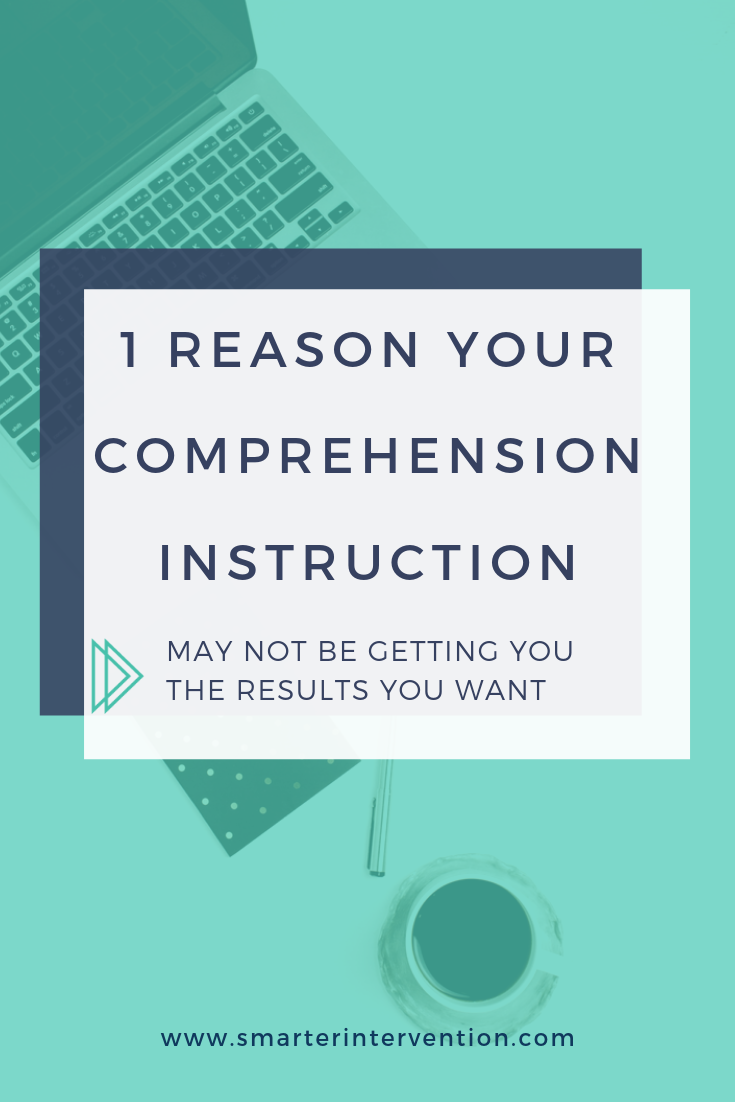1 Reason Your Comprehension Instruction May Not Be Getting You The Results You Want
Over the past twenty years, I have observed a transformation in the teaching of reading from an approach that measured readers' successful understanding of text through lengthy packets of comprehension questions to one that requires students to think about their thinking, activating their "good reader" strategies.
The National Assessment of Educational Progress even made one of those strategies—making reader/text connections—a thinking strand within its framework. For a long while, this approach looked ideal. What could be better than creating metacognitive readers?
But the teaching of reading veered significantly off track when those personal connections (also well represented on some high-stakes state assessments) began to monopolize the teaching and testing of comprehension, often leaving the text itself a distant memory
Although well-intentioned, the shift to teaching reading as a set of thinking strategies too often left readers with the notion that the text was simply a launching point for their imagination or personal stories, images that popped into their heads, and random questions that, in the end, did little to enhance their understanding of the text itself. So, if responding personally to text isn't leading students to deeper understanding, then where should teachers turn to help students improve their comprehension?
Begin with setting goals for classroom instruction, IEP’s and other individualized plans that go beyond questioning and making connections in order to measure comprehension.
Here is an example of a standard IEP goal that focuses on comprehension:
_____ will read a short selection of at least 10 sentences and answer “what” questions.
While questioning does have a place in assessing comprehension, we need to go deeper than questioning to make sure students have digested the text. Also, this goal leaves me wondering how will this be measured and what resources will be used to teach this strategy.
Here is another standard IEP comprehension goal:
_____ will demonstrate comprehension of unknown words by utilizing a dictionary source to define words and produce a grammatically correct sentence containing the new vocabulary word.
This is another goal that only scratches the surface of comprehending or understanding vocabulary.
For starters, these are not measurable and they lack a specific goal. They also do not define what resources or instructional methods will be used to attain this proficiency. Furthermore, will this use of a dictionary truly enhance a student’s vocabulary? My guess is no.
This is a case where the teachers working with this student may not see the growth in comprehension, as a result of weak vocabulary skills, improve. This student would benefit from a structured program that focuses on vocabulary development to understand meaning and apply this meaning in context. Using context clues, semantic maps, and other resources would help to scaffold and dig deeper into vocabulary work – and would likely be more engaging than just looking up words in a dictionary.
When developing goals around comprehension, think of how you can break the task down into small, attainable steps. Then, focus on how these steps will be delivered and what resources will be used. Graphic organizers such as two-column notes, tree maps, and outlines can be incredibly helpful for students who are learning how to digest and synthesize – or comprehend – a text. Finally, how will comprehension be measured? Remember that verbs such as expand, understand, and get….are vague. They are broad and unmeasurable. Instead, opt for verbs such as identify, retell, and classify.
Here are some examples of well-written comprehension goals that will get the heart of what comprehension is – making meaning from text:
Student will identify the beginning, middle, and end as well as the sequence of events in a reading selection as measured by ___________ (running records, IRI, anecdotal data, observation, performance assessment, etc.) across _________ number of attempts.
Student will return to text to locate information, support conclusions and answer questions by highlighting evidence to support the response with 80% accuracy over three consecutive attempts across three different types of genres.
Notice these goals are specific in their outcome and the outcome goes beyond just questions or personal connections. It truly takes readers into the text and helps them glean meaning from what they have read. These goals are all specific in how this work is measured and what tools are used to meet this end.
Check out some fantastic comprehension resources in the 5CCL Activity Library. This library has hundreds of activities that can be used to target all 5 of the core components of literacy. To learn more, use the button below.

